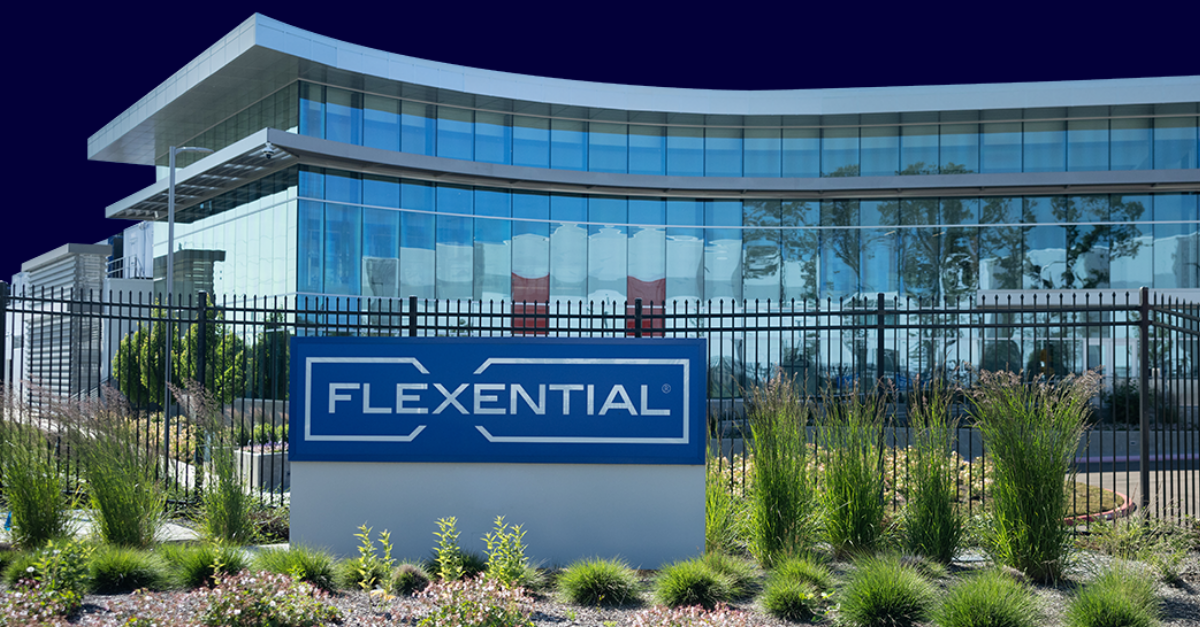Hybrid cloud and multicloud use cases
Optimize data management, enhance scalability, and drive innovation in cloud environments.

The introduction of multicloud and hybrid cloud solutions completely transformed cloud computing environments. This guide aims to navigate you through the distinct use cases of both hybrid cloud and multicloud strategies, explain their unique benefits, and provide valuable insights into their seamless implementations. As organizations increasingly embrace the versatility of these advanced cloud models, understanding their practical applications becomes essential for unlocking their full potential.
What is hybrid cloud?
Hybrid cloud solutions merge on-site infrastructure with cloud-based services, reshaping IT architecture into a more dynamic and adaptable system. This innovative combination allows organizations to harness the cloud’s scalability and agility alongside the reliability of on-site systems. This interaction enables businesses to strike an optimal balance between the stability and control of internal infrastructure, adherence to compliance standards, and the flexibility to quickly adapt to evolving operational needs. Hybrid cloud’s adaptability redefines corporate IT management by seamlessly adjusting resources to fluctuating demands and workloads, boosting operational efficiency, and preparing businesses in an era where adaptability is key to success.
What is multicloud?
Multicloud is the strategic utilization of services from multiple cloud providers, allowing businesses to select best-of-breed solutions tailored to their specific needs rather than being confined to a single provider’s ecosystem. Multicloud solutions’ main advantages are flexibility and agility, enabling businesses to strategically split their workloads over multiple platforms to optimize performance, cost, and compliance. This reduces the possibility of vendor lock-in and improves resilience by reducing the impact of possible outages or service interruptions from a single vendor.
What are the most common uses of multicloud?
Now that we understand what it is and how it works, let’s look at the most common uses of multicloud, from disaster recovery and business continuity to data sovereignty, compliance, peak demand management, and cost optimization.
Disaster recovery and business continuity
Multicloud architectures significantly enhance disaster recovery (DR) capabilities by providing redundant infrastructure and data centers spread across various locations. This geographical distribution minimizes the risk of a single point of failure, as data is replicated in multiple cloud environments. Additionally, business continuity is strengthened through the ability to transfer workloads and operations between different cloud platforms. This flexibility ensures critical operations persist without interruption, even if one cloud provider experiences issues.
Data sovereignty and compliance
Multicloud architectures enable organizations to comply with specific data sovereignty laws by allowing data storage in cloud regions that adhere to particular regulatory requirements. This approach is particularly beneficial in sectors with stringent regulations about data residency within specific geographic boundaries. By utilizing a variety of cloud providers, companies can align their data storage strategies with different regulatory standards, thereby reducing the risk of non-compliance.
Peak demand and cost optimization
One of the primary uses of multicloud is for managing peak demand by leveraging each public cloud provider’s specific strengths and capacities. Workloads can be allocated to the cloud service that offers the most cost-effective and performance-efficient solution for a particular task. This allows businesses to avoid over-provisioning and to only pay for the resources they consume, resulting in significant cost savings.
Beyond simply managing peak demand, multicloud approaches enable businesses to continuously evaluate and modify their cloud resource usage. Because there is a wide range of cloud providers and services to choose from, enterprises can adopt a calculated strategy to reduce expenses and optimize efficiency. This not only ensures financial efficiency but also positions organizations to adapt swiftly to changing market conditions.
Innovation and application development
Multicloud environments play a crucial role in fostering innovation and enhancing application development, leading to increased agility, creativity, and faster market entry for businesses.
These environments offer a diverse array of services, enabling developers to choose the most suitable tools for their specific application needs. By eliminating barriers and easing the adoption of cutting-edge technology, this flexibility fosters innovation and gives development teams the freedom to experiment with new concepts and efficiently bring innovative solutions to market.
In a multicloud environment, application development also improves resiliency and reduces risks. By spreading applications across various cloud platforms, companies can maintain continuous operations, even in the event of disruptions or outages specific to a single provider. This resilience not only helps to prevent potential downtime but also aids in developing strong, fault-tolerant applications.
What are the most common uses of hybrid cloud?
As organizations and users increasingly seek dynamic and adaptive cloud infrastructures, understanding the most common uses of a hybrid cloud solution — from improved scalability to enhanced security and disaster to application innovation — becomes vital. Here are five of the top five hybrid use cases:
Improved flexibility and scalability
Improved flexibility and scalability are advantageous use cases for organizations adopting a hybrid cloud model. Hybrid cloud solutions seamlessly integrate on-premises infrastructure with cloud services, empowering organizations with the ability to choose the deployment model that best suits their workload.
What is scalability in the context of hybrid cloud?
The ability to scale resources up or down in response to demand in a hybrid or on-premises private cloud environment is revolutionary because it ensures optimal performance and cost-efficiency for businesses. The public cloud can easily manage the extra load during times of high demand or seasonal spikes, avoiding performance bottlenecks and ensuring a satisfying user experience. On the other hand, on-premises infrastructure can offer a reliable and affordable environment for applications with consistent resource requirements.
Here’s one example of how it would work: critical and sensitive workloads can reside on-premises, ensuring data control and compliance with regulatory requirements, while less sensitive workloads or those with varying resource demands can leverage the elasticity of the public cloud. This strategic distribution of workloads optimizes resource utilization and provides the flexibility to align IT infrastructure with specific application requirements.
Enhanced security
A hybrid cloud solution delivers enhanced security by combining the control and compliance capabilities of on-premises infrastructure with the advanced security features offered by reputable public cloud providers.
How hybrid clouds improve data security
On-premises infrastructure provides a secure environment where organizations can maintain sensitive data and critical applications. This method provides direct control and monitoring of security procedures, guaranteeing adherence to industry regulations and company policies. The hybrid cloud’s on-premises component can host critical workloads that need strict security controls, such as proprietary data or private customer information.
At the same time, public cloud services contribute to enhanced security through their advanced security features and dedicated teams focused on safeguarding cloud infrastructure. Cloud service providers make significant investments in threat detection, identity and access control, and encryption, and organizations can take advantage of these strong security protocols while gaining access to the knowledge and ongoing innovation of private cloud providers.
The strategic combination of on-premises and public cloud elements in hybrid public clouds establishes a multi-layered defense strategy, fortifying data security against evolving cyber threats.
Disaster recovery
Disaster recovery stands out as a crucial use case for hybrid cloud environments, offering organizations a blend of resilience, flexibility, and efficiency to safeguard against unforeseen disruptions. They provide a dual layer of data protection by storing critical information both on-site and in the private cloud environment, ensuring data recovery if one location is compromised.
How hybrid clouds aid in disaster management
A significant benefit of hybrid clouds is their capability to mirror essential data and applications across on-site infrastructure and cloud platforms. This approach of dual replication reduces the likelihood of a single point of failure, thus bolstering the dependability of the disaster recovery plan.
Hybrid clouds also enable organizations to leverage the scalability of the cloud for disaster recovery purposes. While on-premises setups efficiently manage everyday workloads, the cloud’s capacity to swiftly expand becomes invaluable during emergencies. This scalability ensures resource availability on demand, helping maintain critical services and applications under adverse conditions. The hybrid model also facilitates smooth failover orchestration, enabling a seamless shift from local to cloud resources when disaster strikes. Combining the resilience of on-site infrastructure with the cloud platform’s scalability, hybrid cloud solutions forge a formidable disaster recovery framework.
Cost efficiency
Hybrid cloud deployments are highly valued for their cost efficiency, presenting a balanced solution for organizations aiming to optimize expenses while maintaining a versatile and robust IT framework. These environments blend on-premises infrastructure with cloud services, enabling businesses to benefit from the best of both worlds while managing costs effectively.
Breaking down the cost-effectiveness of hybrid clouds
A crucial element of this cost efficiency is the dynamic scalability of resources. In hybrid cloud settings, organizations can tap into the cloud’s expansive scalability during times of high demand, circumventing the need for constant large-scale local resources. This approach ensures resource utilization is maximized, cutting down on the costs linked to underutilized infrastructure. Additionally, the hybrid cloud infrastructure’s pay-as-you-go service model allows for payment based only on actual resource usage, offering flexibility and aiding in budget control.
In addition, hybrid clouds support strategic workload distribution so organizations can allocate high-priority tasks to the on-premises infrastructure for better performance while assigning less critical tasks to the cloud, which is often more cost-effective. This strategic placement of workloads ensures that performance objectives are met without unnecessary expenditure. Ultimately, hybrid clouds are a practical option for businesses seeking to harness the cost benefits of both local and cloud-based solutions, fostering long-term financial efficiency in IT management.
Innovation and speed
Innovation and speed stand out as compelling use cases for adopting hybrid cloud solutions, offering organizations the agility and flexibility needed to stay competitive in today’s dynamic business landscape. Hybrid clouds provide a powerful platform for fostering innovation and accelerating the pace of application development and deployment.
How hybrid clouds drive rapid innovation
The hybrid cloud model allows organizations to leverage the best of both on-premises and cloud environments. Organizations can create a versatile infrastructure by maintaining critical and sensitive workloads on-premises while utilizing the scalability and innovation capabilities of the cloud. This flexibility enables faster experimentation with new technologies, frameworks, and application architectures.
The speed of innovation is further enhanced by the seamless integration of cloud-native services in hybrid environments. Organizations can take advantage of cutting-edge tools and services provided by cloud providers to streamline development processes, implement DevOps practices, and facilitate continuous integration and delivery (CI/CD). This accelerates the development lifecycle, allowing teams to bring new ideas to market faster and respond quickly to evolving customer demands.
Hybrid cloud also supports the adoption of emerging technologies such as artificial intelligence (AI) and machine learning (ML), providing the computational power and resources required for data-intensive tasks. The ability to scale resources on demand ensures that organizations can swiftly adapt to the evolving technological landscape, fostering a culture of innovation and maintaining a competitive edge in their respective industries.
Best practices for multicloud implementation
As businesses increasingly turn to multicloud strategies to harness the power of multiple cloud service providers, they need to follow best practices to navigate the complexities of multicloud environments successfully. Here, we will look at a few key strategies and insights that will help you along the way.
Develop a multicloud strategy
Develop a well-defined and comprehensive multicloud strategy that aligns with your organizational goals. Consider factors such as workload requirements, data sensitivity, and compliance standards when selecting cloud providers. A clear strategy ensures that each cloud service contributes strategically to your business objectives, avoiding fragmentation and maximizing the benefits of multicloud architecture.
Integration is key
Prioritize interoperability and seamless integration between different cloud platforms. Choose solutions and tools that support open standards, enabling smooth data flow and communication between diverse cloud environments. This approach simplifies management and enhances flexibility, allowing workloads to move seamlessly across public and private clouds based on performance, cost, or other considerations.
Be proactive about security
Implement a unified security framework and compliance strategy across all cloud providers to maintain a consistent and robust security posture. Leverage identity and access management (IAM) solutions that work cohesively across platforms, ensuring secure access and compliance with industry regulations. Regular audits and monitoring are essential to identify and address security vulnerabilities proactively.
Monitor resources for cost-savings
Effectively manage costs by optimizing resource utilization, monitoring usage patterns, and leveraging cost management tools provided by cloud providers. Implement workload scaling and resource provisioning automation to adapt dynamically to changing demands, minimizing unnecessary expenses. Regularly review your multicloud architecture to identify opportunities for cost optimization and ensure alignment with budgetary goals.
Prepare for disaster recovery
Design your multicloud architecture with a focus on resilience and redundancy. Distribute critical workloads across multiple cloud providers and regions to minimize the impact of potential outages or disruptions to cloud backup. Implement robust disaster recovery plans that account for multicloud scenarios, ensuring business continuity and data integrity in the face of unforeseen events.
Best practices for hybrid cloud implementation
To transition to a hybrid cloud architecture, you need to be aware of the best practices to ensure a successful implementation. Covering aspects like scalability, heightened security, disaster recovery, and cost efficiency, let’s look at some of the fundamental aspects necessary to design a hybrid cloud infrastructure to be robust and streamlined.
Include a holistic cloud strategy
Develop a holistic hybrid cloud strategy that aligns with your business objectives and accommodates both on-premises and cloud environments. Consider factors such as workload requirements, data sensitivity, and compliance standards when deciding which workloads to migrate or keep on-premises. A comprehensive strategy ensures a seamless integration of on-premises and cloud resources to meet specific business needs.
Apply interconnected security measures
Implement interconnected security measures that span both on-premises and cloud components. Utilize robust identity and access management (IAM) solutions, encryption protocols, and network security practices that seamlessly extend across hybrid environments. This ensures a consistent and unified security posture, reducing vulnerabilities and enhancing overall data protection.
Leverage scalable flexibility and performance
Distribute workloads efficiently between on-premises infrastructure and the cloud, allowing for optimal resource utilization. This scalability ensures that your organization can meet performance demands without overprovisioning resources, leading to cost savings and improved operational efficiency.
Unify data management
Implement integrated data management practices that span on-premises and cloud databases. Utilize hybrid cloud solutions that facilitate seamless data movement and synchronization between environments. This ensures data consistency, availability, and accessibility, allowing your organization to harness the benefits of both on-premises and cloud and data center resources.
Plan for disaster recovery and business continuity
Develop a robust disaster recovery and business continuity plan that accounts for both on-premises and cloud-based scenarios. Establish clear recovery objectives and implement redundant systems and data backups across hybrid environments. Regularly test and update the disaster recovery plan to ensure its effectiveness in minimizing downtime and data loss during unforeseen events.
Why do organizations use the hybrid and multicloud approaches?
Organizations are increasingly adopting hybrid and multicloud approaches for flexibility and scalability, allowing them to adjust IT infrastructure dynamically to meet changing demands and expand with less upfront investment. These approaches also reduce risks and enhance reliability by avoiding dependence on a single cloud provider, thereby preventing vendor lock-in and minimizing service disruptions. Additionally, they aid in compliance with data sovereignty and regulatory requirements, as data can be stored and processed in various locations according to legal needs. Cost management is another advantage, as organizations can select the most cost-effective services from different providers, leading to substantial savings. Finally, these approaches promote innovation, giving organizations access to a wide range of services and platforms, facilitating rapid deployment of new solutions, and enabling quicker adaptation to market changes and customer needs.
Flexential: Your partner in cloud connectivity
As your organization navigates the complexities of hybrid and multicloud environments, Flexential is your trusted cloud connectivity partner. Explore our comprehensive cloud solutions and discover how Flexential can create a solution that fits your needs today and flexes to accommodate future opportunities. Our cloud computing experts dig deep to understand your specific requirements, then design, build, and deliver a cloud solution to enable your business’s long-term success.
Explore the endless possibilities of hybrid and multicloud solutions with Flexential. Schedule a consultation today.







